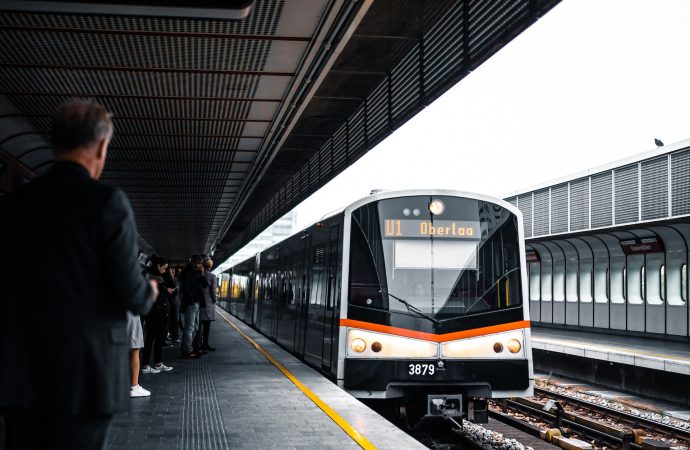After years of anticipation and numerous setbacks, the Potomac Yard Metro Station in Alexandria, Virginia, has finally opened its doors to the public. This long-awaited milestone marks a significant achievement for the city and its residents, offering improved transportation options and stimulating economic growth. This in-depth report explores the decades-long journey leading up to the
After years of anticipation and numerous setbacks, the Potomac Yard Metro Station in Alexandria, Virginia, has finally opened its doors to the public. This long-awaited milestone marks a significant achievement for the city and its residents, offering improved transportation options and stimulating economic growth. This in-depth report explores the decades-long journey leading up to the station’s opening and the impact it is expected to have on the local community.
A Vision for Connectivity:
The idea of a Metro station at Potomac Yard was first conceived more than three decades ago, with the goal of enhancing connectivity between Northern Virginia and the nation’s capital. The station’s location, strategically situated between the existing Braddock Road and National Airport stations, aims to bridge the gap and provide residents and commuters with easier access to key destinations.
Delays and Challenges:
While the vision for the Potomac Yard Metro Station was clear, the path to its realization was marred by numerous delays and challenges. Funding issues, environmental concerns, and intricate planning processes all contributed to the prolonged timeline. The project faced significant setbacks, including legal battles and community pushback, which added further obstacles along the way.
Community Engagement and Environmental Considerations:
Throughout the years, community engagement played a pivotal role in shaping the development of the Potomac Yard Metro Station. Local residents, businesses, and advocacy groups voiced their opinions and concerns, influencing the design, aesthetics, and impact of the station. Environmental considerations were also at the forefront, with measures taken to minimize the project’s ecological footprint and preserve the area’s natural surroundings.
Economic Implications and Urban Renewal:
The opening of the Potomac Yard Metro Station holds immense economic potential for the city of Alexandria. The station is expected to serve as a catalyst for urban renewal and spur economic growth in the surrounding area. The convenience and accessibility offered by the Metro will likely attract businesses, investors, and new residents, leading to job creation and a vibrant local economy.
Transportation Transformation:
With the opening of the Potomac Yard Metro Station, commuters and residents can look forward to a transformed transportation landscape. The station’s integration into the Metro system provides seamless connectivity and opens up new possibilities for travel within the region. It alleviates traffic congestion, offers an alternative to driving, and encourages the use of public transportation, ultimately contributing to a more sustainable and efficient transportation network.
Community Impact and Livability:
Beyond the economic benefits, the Potomac Yard Metro Station is expected to have a profound impact on the quality of life for Alexandria residents. It provides improved accessibility to employment centers, educational institutions, and recreational areas, empowering individuals to connect with opportunities and resources throughout the region. Additionally, the station’s presence is likely to stimulate further community development and enhance the overall livability of the area.
Looking Ahead:
As the Potomac Yard Metro Station opens its doors, it marks the culmination of decades of planning, collaboration, and perseverance. The journey has been arduous, but the benefits are poised to be substantial. Alexandria residents can now enjoy the convenience of a new transportation hub, while the city anticipates increased economic vitality and improved connectivity with neighboring areas. The Potomac Yard Metro Station stands as a testament to the power of vision, community engagement, and the transformative potential of public infrastructure projects.
Conclusion:
After years of anticipation, the Potomac Yard Metro Station has become a reality in Alexandria, Virginia. This long-awaited milestone promises improved connectivity, economic growth, and enhanced livability for the community. The challenges faced along the way have been overcome through the determination of stakeholders and the engagement of local residents.

















Leave a Comment
Your email address will not be published. Required fields are marked with *